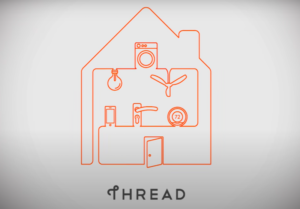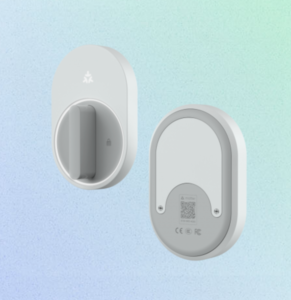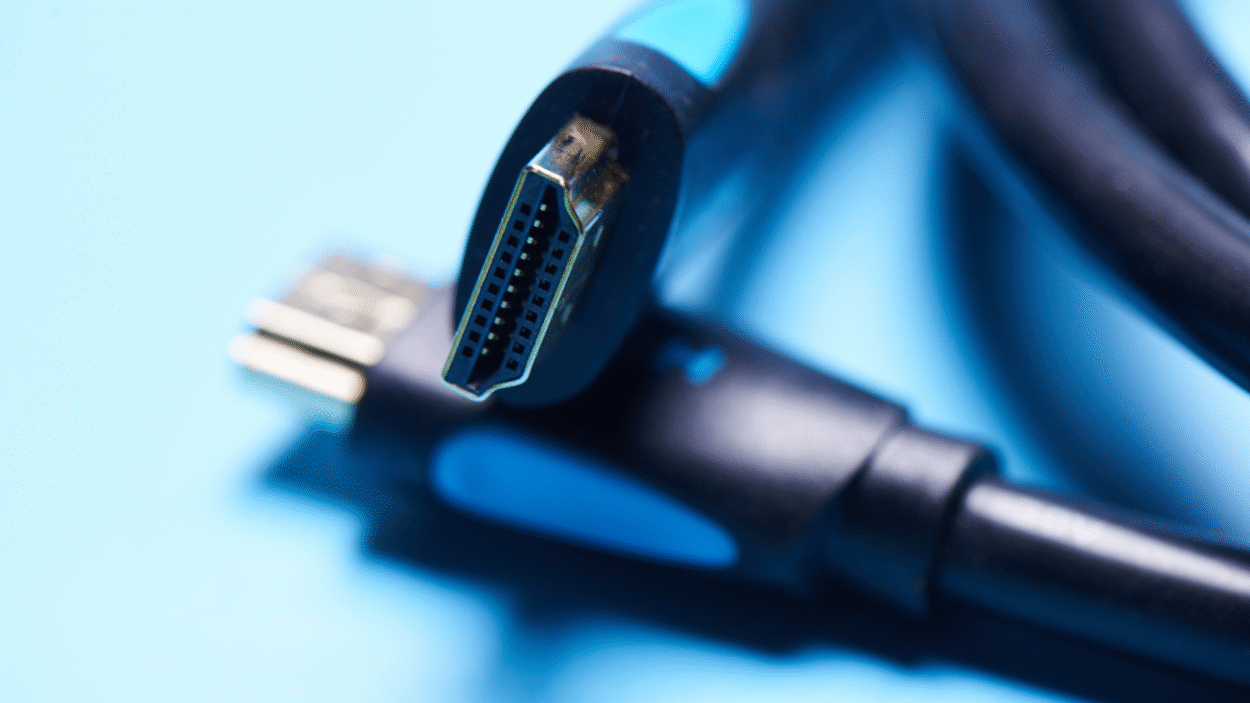Wikipedia defines a communications protocol as “a system of rules that allows two or more entities of a communications system to transmit information via any variation of a physical quantity. The protocol defines the rules, syntax, semantics, and synchronization of communication and possible error recovery methods.”
When I first started automating my home in the 1980s, X10 was the only protocol that enabled information to be communicated between smart home devices. X10’s primary method of communication was to encode information onto the electrical waveform of the electricity provided by the power company in a home.
It was incredibly unreliable because the protocol didn’t include handshaking or error correction. Simply turning on a blender in the kitchen could create enough electrical noise to block all X10 communications throughout a home. The primary X10 devices available to consumers were smart plugs, plug-in lamp dimmers, and smart switches. Based on these form factors, X10 was the original source of the saying “plug and pray.”
Thankfully, there is now a wide range of modern smart home protocols and devices that incorporate them. Protocols used by today’s smart home devices include:
- Zigbee
- Z-Wave
- Z-Wave Long Range
- Bluetooth Low Energy (BLE)
- Wi-Fi
- Thread
- HomeKit
- DotDot
- Sidewalk
- And more…
This article will try to make sense of today’s smart home protocols and talk about the changes coming in the near future. I want to thank Johan Pederson, manager, product marketing – smart home & consumer IoT at Silicon Labs for his help with this article.
Zigbee
Zigbee is an open standard, wireless protocol designed to allow IoT devices to communicate with each other. The Zigbee standard was developed by the Zigbee Alliance, which re-branded itself as the Connectivity Standards Alliance (CSA) in 2021. Today, the CSA is a consortium of more than 350 companies in more than 37 countries and is “on a mission to simplify and harmonize the IoT.”
Zigbee devices primarily operate at 2.4 GHz, which is the same frequency range as Wi-Fi. Similar to Wi-Fi, Zigbee breaks down the 2.4 GHz frequency spectrum into a series of channels so a channel can be chosen for devices to communicate on to minimize the amount of interference from Wi-Fi. Out of the 16 5MHz wide Zigbee channels, three of them are outside the range of the U.S. and European versions of Wi-Fi, allowing for choices that minimize interference.
Zigbee devices operate as a mesh network. A home might include a Zigbee light switch in one room that is trying to communicate with a Zigbee hub in another room. However, if there is a large, stainless steel, Subzero refrigerator directly in between the two devices, it could block those communications. The Zigbee mesh network will route communications through other Zigbee devices in the home to work around the refrigerator. Another way of thinking about this is that each Zigbee device can be a transmitter of messages, a receiver of messages, and a device that passes along messages destined for other Zigbee devices.
Theoretically, up to 65,000 Zigbee devices can exist in single Zigbee mesh network. However, the practical limit is more on the magnitude of a few hundred, which should be more than adequate for even a very large smart home.
The Zigbee protocol is designed to be very secure and also very reliable. It includes 128-bit AES encryption and offers features such as retries of lost messages and acknowledgements when messages are received.
It is important to note that not all manufacturers of Zigbee devices followed the same version of the Zigbee standard. Therefore, not all Zigbee devices may work with every Zigbee hub. For example, a homeowner may find that they can discover and pair a Zigbee device with their Zigbee hub, but then the hub will not work with the device. For this reason, it is important to check the manufacturer’s compatibility list before purchasing a Zigbee device.
In addition, this incompatibility can cause interference unless Zigbee channels are chosen carefully. For example, Philips Hue light bulbs communicate over Zigbee with a Philips Hue hub but not directly with a Hubitat Elevation hub. Because the Hue bulbs and Hue hub will form their own Zigbee network, they could interfere with other Zigbee devices in a home that are communicating directly with the Hubitat Elevation hub.
Zigbee devices theoretically have a range of between 75 and 100 meters indoors, but a more practical limitation is around 40 feet. The mesh networking ability of Zigbee devices, for the most part, negates this limitation as communications can hop from one Zigbee device to another.
The data rate of communications between Zigbee devices is 250 Kbps. Wi-Fi speed, in comparison is measured in Mbps (1 Mbps is 1000 times faster than 1 Kbps). So, while the speed of Zigbee is perfectly adequate for communications between, for example, a smart light switch and a Zigbee hub, it isn’t a protocol that you would want to use for streaming video from a high definition security camera to a smart display.
Finally, it is worth mentioning that it is my understanding that Crestron’s infiNET EX wireless protocol is a customized version of Zigbee. However, Crestron infiNET EX devices cannot be integrated into Zigbee networks and off-the-shelf Zigbee devices cannot be integrated into an infiNET EX network.
Z-Wave
Comparisons between Z-Wave and Zigbee are very natural because they are two of the most popular mesh network technologies for smart homes. In addition, both Zigbee and Z-Wave incorporate 128-bit AES encryption, so both provide a high degree of security. However, there are some significant differences.
Z-Wave was developed by Zensys in 2001 and while there was an alliance of companies that contributed to the development of Z-Wave, it wasn’t until 2020 that it became an open standard.
Z-Wave products tend to be more expensive when compared to similar Zigbee products. At the time of this writing I found a Zigbee smart plug on Amazon for as low as $10. On the other hand, Z-Wave smart plugs on Amazon cost more than $20.
Zigbee devices primarily operate in the 2.4GHz band overlapping the frequencies used by Wi-Fi. Z-Wave operates at 908/916MHz in the U.S.
The lower frequency used by Z-Wave eliminates any interference with Wi-Fi. In addition, the lower frequency used by Z-Wave does a better job of penetrating through the walls in a home. Z-Wave devices can reliably communicate at distances up to 100 meters. A downside of the lower frequency range used by Z-Wave is that the data throughput is lower. While Zigbee transfers data at 40-250kbps, Z-Wave only transfers data at 10-100kbps, which is still adequate for communications between a typical Z-Wave device, such as a light switch, and a smart home hub.
A Zigbee network can theoretically include up to 65,000 devices. However, a Z-Wave network can only include 232 devices. This shouldn’t be an issue for all but the largest homes, of course.
It is also important to keep in mind that the SmartThings hub, Hubitat Elevation hub, and others include both Z-Wave and Zigbee radios so a homeowner can include devices from both standards in their smart home.
Both Zigbee and Z-Wave use 128-bit AES encryption. However, Z-Wave is also UL 1023 compliant. This is the UL standard for residential burglar alarms and Z-Wave’s compliance with it is the reason that alarm system manufacturers that offer smart home integration with their alarm systems have embraced Z-Wave.
Z-Wave offers better interoperability between devices than Zigbee. Not all Zigbee devices work with every Zigbee hub. However, Z-Wave’s strict certification process means that the majority of Z-Wave devices manufactured years ago can still be used with the latest generation of Z-Wave hubs.
Z-Wave offers a SmartStart feature that allows Z-Wave devices to be very quickly and easily integrated with a SmartStart-enabled Z-Wave gateway by simply scanning a QR Code included with the Z-Wave device.
Z-Wave Long Range Protocol
Z-Wave Long Range was announced just about a year ago in September 2020. It takes Z-Wave into a new direction with some very advanced capabilities.
The first thing to understand about Z-Wave Long Range is that it is no longer a mesh networking technology. Instead, it uses a star topology where each Z-Wave Long Range device connects independently to a hub.

Z-Wave Long Range devices operate at 912/920MHz so, like traditional Z-Wave devices, they will not interfere with Wi-Fi or Zigbee devices.
Z-Wave Long Range devices are backwards compatible with existing Z-Wave installations. A Z-Wave Long Range device can participate in a normal Z-Wave mesh network if there is no Long Range capability in the Z-Wave gateway/hub.
Amazingly, Z-Wave Long Range devices require very little power. In fact, the estimated battery life for a basic coin style battery that powers a Z-Wave Long Range device is 10 years.
Finally, Z-Wave Long Range devices, like traditional Z-Wave and Zigbee devices, incorporate 128-bit AES encryption for security.
That is all the good news about Z-Wave Long Range. The bad news is that Z-Wave Long Range devices and hubs that support them haven’t reached the market yet. Fortunately, this should be changing in the very near future. Having a protocol that supports communication with devices up to a mile away is compelling for gates, locks, and other outdoor smart devices.
Bluetooth Low Energy
Bluetooth Low Energy (BLE) is not your grandmother’s Bluetooth that has been used to stream audio to speakers, headphones, and ear buds for years. BLE supports mesh networking and much lower power consumption than “classic” Bluetooth. In addition, a BLE mesh network can theoretically consist of up to 32,767 devices.
BLE does operate in the same 2.4GHz band as Wi-Fi, but it utilizes 40, narrow, 2MHz, channels and “hops” among the available channels, to avoid interference.
While classic Bluetooth has been subject to security exploits, including BlueSmacking, BlueJacking, BlueSnarfing, and BlueBugging, BLE uses 128-Bit AES encryption to create a highly secure mesh network.
BLE devices typically have a range of only a few meters due to the devices being battery powered and the limited power of the transmitters to save energy.
Because of BLE’s low power consumption and limited range, and the inclusion of BLE radios in smart phones, one use of BLE in the smart home is in beacons. Beacons are small devices that transmit signals over the BLE protocol. A user carrying a smart phone will move within range of a beacon, and their smart phone will connect with it. The connection will be used by the smart home to physically locate an individual within the home. A person’s location can then be used to drive smart home automations, including turning on/off lights, triggering the individual’s favorite music to play, adjusting a thermostat to the individual’s personal preference, and more.
BLE is also becoming very popular for the installation, and setup, of smart home devices using smart phones/tablets.
Wi-Fi
Wi-Fi is the most ubiquitous network in homes with broadband internet access. So, on one hand it makes sense to use it as the basis for communications to smart home devices in a home.
With Wi-Fi, there’s no requirement to purchase a hub, no additional knowledge required to add smart home devices to the network, and a large number of smart home devices from which to choose. Wi-Fi-based smart home devices also tend to be less expensive than smart home devices that use other protocols, and Wi-Fi is a strict standard so any Wi-Fi device can communicate with any Wi-Fi router, access point, or range extender
However, there are some distinct disadvantages of using Wi-Fi as the underlying protocol for your smart home:
- As the number of Wi-Fi devices grows, the amount of RF interference also grows
- How close you live to your neighbors, and your neighbors’ Wi-Fi networks, can impact the performance of your Wi-Fi.
- Most residential Wi-Fi networks use a single subnet which limits the number of devices to 255. Many Wi-Fi routers can’t even handle this number of simultaneously connected devices.
- Wi-Fi devices connect in a star topology with all devices connecting to a Wi-Fi router, access point, or range extender. This limits how far Wi-Fi devices can be located from the Wi-Fi network in a home.
- Other users of Wi-Fi can dramatically affect the performance of a Wi-Fi network. For example, if people in the home start streaming 4K, high definition, video over Wi-Fi, it can dramatically affect the performance of other Wi-Fi devices.
- WiFi requires more power than other smart home protocols. This decreases the time before battery operated smart home devices need to have their batteries recharged or replaced.
Wi-Fi operates at 2.4GHz and 5 GHz. Devices connecting to a Wi-Fi network at 2.4GHz have a practical range of 150 feet. On the other hand, devices connecting to a Wi-Fi network at 5GHz only have a practical range of 50 feet.
Devices on a Wi-Fi network communicate using the industry standard TCP/IP protocol which is very fault tolerant and secure.
The speed of a Wi-Fi network far surpasses the capabilities of other wireless networking options with data rates up to 9600Mbps.
Thread Protocol
Thread is an open source wireless mesh networking protocol based on industry standard IPv6 addressing.

Thread is able to minimize the power requirements for thread devices by leveraging IEEE 802.15.4 for the physical layer of the protocol, which is the same physical layer transport used by Zigbee. Utilizing 802.15.4 also means that Thread operates in the same 2.4GHz band as Zigbee and Wi-Fi. It also has a similar range and the same throughput of Zigbee – 250 Kbps. Finally, like Zigbee and Z-Wave, Thread utilizes AES encryption for security.
Thread is known for its low latency – the time that passes between a user taking an action, such as pressing a button to turn a light on, and the response of the light turning on.
While all the above sounds great, currently there are very few smart home devices that implement Thread compared to Z-Wave, Zigbee, and even HomeKit. In coming years, this is expected to rapidly change as Thread becomes one of the core components of the Matter protocol. More on the Matter protocol below.
HomeKit
HomeKit is a proprietary smart home framework developed by Apple that provides for control of HomeKit-compatible smart home devices by Apple products, including iPhones, HomePod smart speakers, etc.
HomePods and AppleTVs can act as hubs to perform automations when, for example, a homeowner is away from home with their iPhone that they normally use to their control HomeKit compatible devices. In addition, HomePods and AppleTVs can also participate in automations and scenes to, for example, start playing music when a motion detector senses that a person has entered a room.
HomeKit-compatible devices communicate using Wi-Fi and Bluetooth.
DotDot
DotDot is another standard under the CSA umbrella. It is a layer that is designed to sit on top of communications protocols and allows IoT devices to talk to each other. So, two devices that implement DotDot will be able to communicate even if one device connects to a hub using Zigbee and the other connects to the hub using Wi-Fi.
DotDot is part of the Zigbee 3.0 specification and helps solve the incompatibilities between different Zigbee devices.
Amazon Sidewalk Protocol
Amazon Sidewalk extends homeowner’s network through select Ring and Echo products (which can act as a Sidewalk bridge) to create a neighborhood-wide network. Sidewalk-enabled devices can then connect back to your smart home even when out of range of your network. Instead, the Sidewalk-enabled device will connect to a neighbor’s Sidewalk bridge, utilize a small portion of that homeowner’s internet connection, and connect back to your smart home.

Sidewalk uses low-energy Bluetooth and 900MHz radio signals to allow Sidewalk devices to connect at distances up to one-half mile. It is also important to know that Amazon limits the amount of bandwidth a homeowner shares with their neighbors through sidewalk to 500MB per month.
Finally, Amazon device owners have the ability to opt out of sharing their internet connection through Sidewalk. This is easily accomplished by changing the preferences on their Sidewalk bridge. It is important to know that, by default, Sidewalk is enabled on Amazon devices.
Matter
Matter (originally called Connected Home over IP (CHIP)) is the newest protocol for IoT wireless communications. It promises to be a unifying standard that will allow all IoT devices to work together. If you think that Matter will just be another competing standard that confuses consumers and complicates smart homes, you are probably wrong.
First, and foremost, you have to look at the companies behind Matter. The Matter consortium includes Amazon, Apple, Google, and Samsung SmartThings. These companies have recognized that it is in their best interest to have IoT devices that are compatible with all of their platforms. Then they can differentiate themselves among competitors by building the best possible platform, but device makers only have to build IoT devices for one protocol specification, rather than four.
Matter is built on top of existing standards including Thread and DotDot, so existing Thread and even Zigbee devices may be able to be upgraded to Matter with only a firmware update. Matter also leverages, and builds upon, the existing security layers within these standards.
Matter is being developed under the umbrella of the CSA and will be royalty free, which keeps the price of IoT devices that use the Matter protocol low. In addition, Matter is being developed as an open source project. The software is available for download on Github and licensed under the Apache open source license.
The availability of a reference software implementation of Matter should speed up development of Matter based IoT devices by manufacturers. IoT devices that communicate using Matter where scheduled to begin appearing on the market in time for the holiday shopping season. However, the CSA recently announced a delay until the first half of 2022.
Amazon has already announced that many of their existing Echo products will become compatible with Matter with a simple software update. They have already added Thread support, needed as a building block for Matter, to their Eero routers.
A primary question for consumers is what will happen to their existing investment in IoT devices? Adding Matter devices to an existing smart home doesn’t mean you have to throw away all your existing Z-Wave and Zigbee devices. First, you may be able to install a firmware update to some Zigbee devices that converts them to Matter. However, that won’t be the case for Z-Wave devices. Fortunately, the Matter consortium thought about this problem.
According to Johan Pederson, “in the CSA and Z-Wave Alliance, there is work on-going defining bridging specifications, meaning smart home hub manufacturers can update their systems to assign a Matter-compatible, virtual, IPv6 address to each Zigbee and Z-Wave device connected to the hub. Then Matter IoT devices will be able to communicate with these devices to create a cohesive ecosystem.”
Since Samsung SmartThings is a member of the Matter Consortium, you can be sure they will implement this functionality in the SmartThings hub. It will be up to other smart home hub manufacturers to follow their lead.
Again, according to Johan Pederson, “Currently Matter is focused on shorter range technologies, and we expect manufacturers to also combine Matter systems with Z-Wave Long Range due to its ability to connect devices that are a mile away.”
In the near term, I don’t expect Matter to have an impact on Zigbee and Z-Wave. There is a tremendous investment by manufacturers and consumers in these technologies in existing smart homes. However, in the longer term the allure of developing a new product with a single protocol that will work with platforms from Amazon, Apple, Google, and Samsung SmartThings will be compelling. I expect that manufacturers’ investments in developing new Z-Wave and Zigbee products will diminish.
Conclusions
The number of protocols for IoT devices in the smart home has been an ongoing source of confusion for many people. Today’s smart home hubs include multiple radios and are capable of integrating devices that communicate with different protocols. In this way they have greatly simplified the issue of competing protocol standards for consumers.
Matter will further simplify things for both consumers and IoT device manufacturers. A single IoT protocol that is supported by Amazon, Apple, Google, Samsung SmartThings, and others means that consumers don’t have to choose a device based on whether it is compatible with their smart home. Manufacturers can lower their costs by only having to make devices for a single protocol standard.
I’m sure there will be missteps and problems as Matter devices become available in 2022, but those problems should be short lived. In the long run, having a unifying communications standard will be good for the smart home industry.
More from This Author: MeatStick and Grillbot Enabling Smarter Outdoor Grilling











